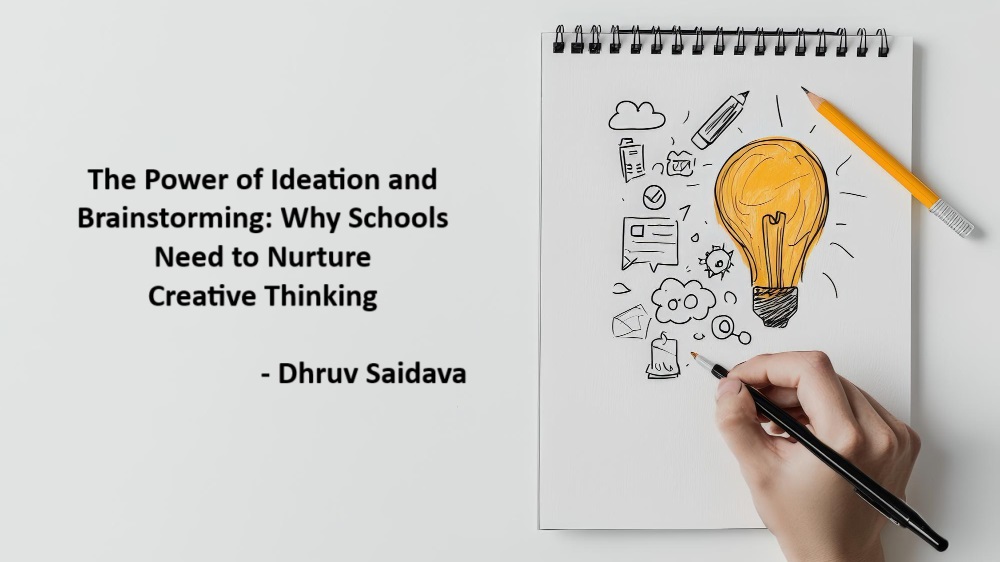
In today’s ever-evolving world, the ability to generate fresh ideas and think creatively has become a necessity. As technology rapidly advances and the job market transforms, it’s evident that the skills needed to succeed are far different from what they once were. This shift makes it increasingly important to teach and practice ideation and brainstorming in schools, empowering the next generation with the tools to thrive in an unpredictable future.
1. Fostering Creativity and Innovation
Creativity is often mistaken as an innate talent reserved for artists or writers, but the truth is, everyone has the potential to think creatively. Teaching students how to brainstorm unlocks this potential, helping them break free from conventional thought patterns. In an ideation session, there are no wrong answers or silly ideas—just opportunities to explore, experiment, and push boundaries. This freedom nurtures the kind of innovative thinking that leads to groundbreaking discoveries, whether in science, technology, arts, or any other field.
2. Enhancing Problem-Solving Skills
Life is full of challenges, and the ability to tackle them head-on is a valuable skill. When students engage in brainstorming, they learn to approach problems from various angles, developing a toolkit of diverse solutions. This process not only enhances their critical thinking skills but also prepares them for complex, real-world challenges. By practicing ideation, students become adept at breaking down problems, identifying root causes, and generating multiple ways to address them—skills that are essential in both personal and professional life.
3. Building Collaborative Skills
The world we live in thrives on collaboration. Whether in a classroom, workplace, or community, the ability to work effectively with others is crucial. Brainstorming is an excellent way to cultivate teamwork, as it encourages students to listen, respect different perspectives, and build on each other’s ideas. By practicing ideation in groups, students learn how to communicate effectively, negotiate, and arrive at a consensus, all while valuing the input of their peers. These skills lay the foundation for strong collaboration, which is indispensable in any career path.
4. Boosting Confidence and Communication
One of the most significant barriers to success is often a lack of confidence. When students are given a platform to share their ideas openly, without judgment or criticism, they gradually build self-assurance. This confidence extends beyond the classroom, equipping them with the courage to voice their opinions, pitch ideas, and participate in discussions. Moreover, the practice of expressing thoughts clearly and persuasively during brainstorming sessions helps improve communication skills, a quality that can benefit students throughout their lives.
5. Encouraging a Growth Mindset
In an ideation exercise, every idea is valued, regardless of how unconventional it may seem. This environment fosters a growth mindset, where students learn that failure is not a setback but a step towards improvement. They become comfortable with the idea that not all solutions will work, but each attempt brings them closer to success. This mindset of resilience, adaptability, and continuous learning is incredibly valuable, as it prepares students to navigate a world that’s constantly changing.
6. Preparing for Real-World Challenges
The problems we face today are complex, and tomorrow’s challenges will be even more so. In this context, teaching students how to brainstorm effectively equips them with the ability to adapt and respond to change. Whether they become entrepreneurs, engineers, doctors, or artists, the capacity to think creatively and generate new ideas will give them a competitive edge in their respective fields.
7. Stimulating Curiosity and Inquiry
Albert Einstein once said, “I have no special talent. I am only passionately curious.” Curiosity is the foundation of all learning, and brainstorming is a fantastic way to ignite this curiosity in students. By encouraging them to ask questions, explore possibilities, and investigate different scenarios, we create an environment where learning is not just about acquiring knowledge but also about the joy of discovery.
8. Bridging Academic Concepts with Practical Application
One of the most exciting aspects of ideation is its ability to connect classroom learning with real-world applications. When students brainstorm solutions to real-life problems, they begin to see how the concepts they learn in school—whether it’s mathematics, science, literature, or social studies—apply to everyday situations. This approach not only makes learning more engaging but also reinforces the relevance and importance of education in their lives.
Final Thoughts
Incorporating ideation and brainstorming into the school curriculum is not just about nurturing the next generation of artists, inventors, or entrepreneurs—it’s about preparing well-rounded individuals who can think critically, communicate effectively, and adapt to the challenges of an ever-changing world. It’s about giving them the confidence to believe in their ideas and the courage to turn those ideas into reality.
By teaching and practicing ideation and brainstorming, we empower students to be more than just passive learners. We inspire them to become active thinkers, problem solvers, and innovators. And in doing so, we are not just preparing them for exams or the next grade level; we are preparing them for life.
Post your comment